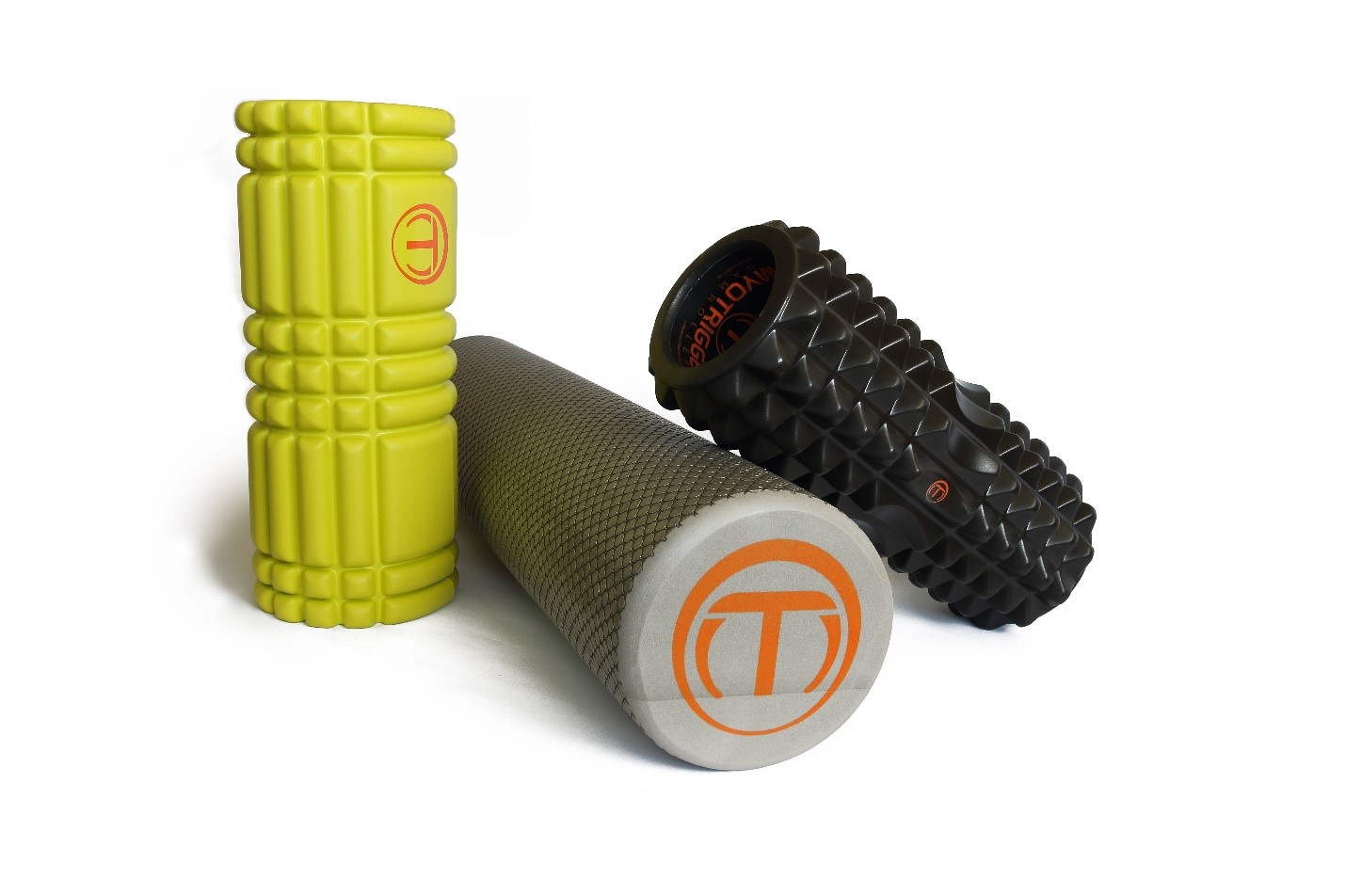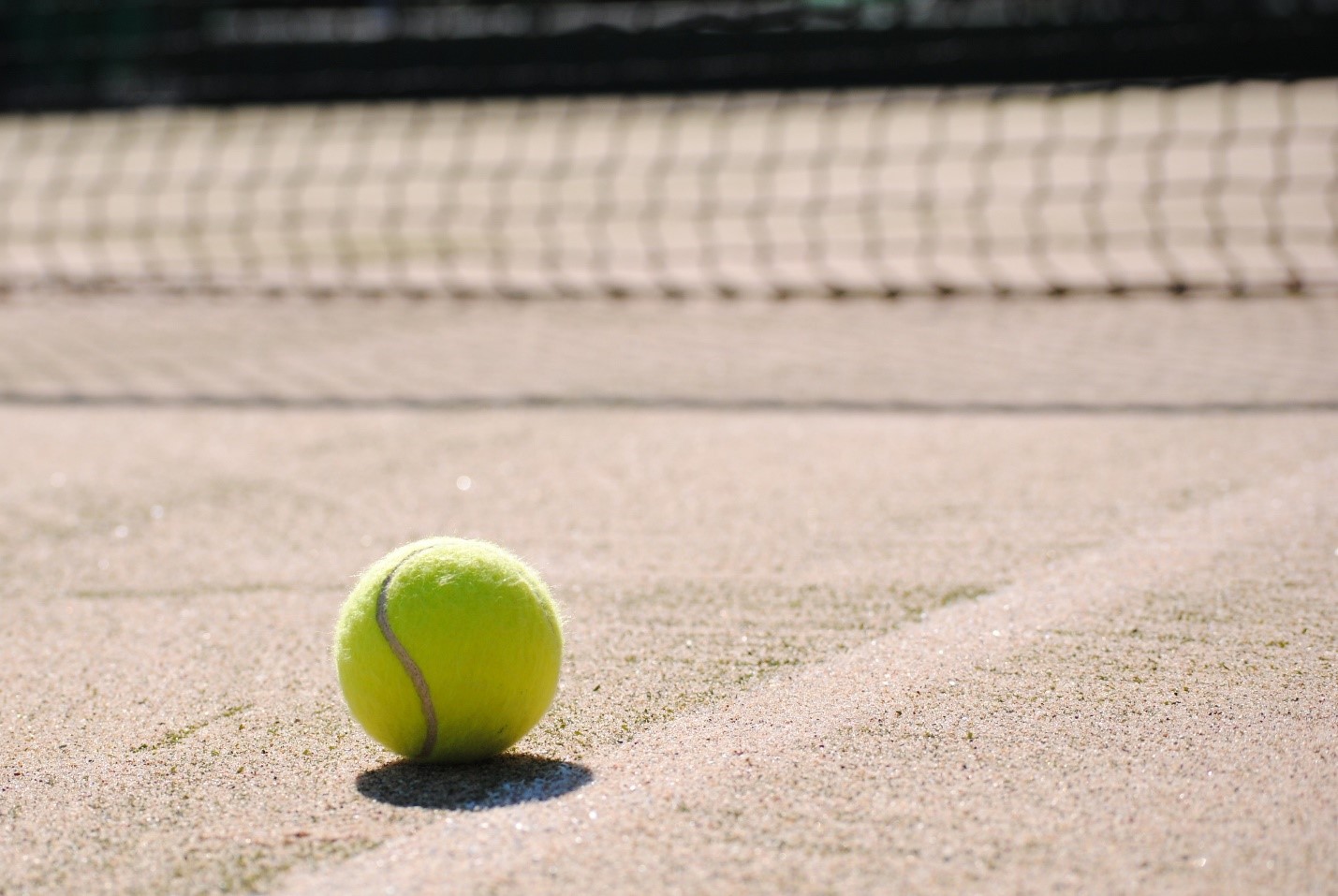Myofascial Release On A Budget (Using A Tennis Ball!)
Fascia is a type of connective tissue that surrounds each muscle, nerve, and blood vessel in the body (1). Decreased flexibility, which can be a result of myofascial issues, can contribute to injury and pain all over the body (2). Areas of tension or “knots” can develop, for example, due to poor body mechanics, overuse, or injury. Myofascial release can help those of you who suffer from either acute or chronic muscle pain.
Self-myofascial release (SMFR) is a relatively new technique of soft tissue mobilization. In the short term, SMFR increases flexibility and reduces muscle soreness by a variety of mechanisms (improved blood flow, improved blood vessel function, and decreased recovery time after an injury) (3,4). Releasing these areas of tension can improve pain. For example, hamstring tightness has been associated with low back pain (5). Self myofascial release has primarily been described via a foam roller in the literature, but that does not mean that similar results can’t be obtained using a tennis ball. It is best to do SMFR after you exercise and not before. This technique can be done 2-3 times per week.
As you can imagine, there’s a variety of foam rollers and other types of myofascial release tools available, depending on what muscle you’re targeting (costs ranging from $10-30). However, for this post, I’m going to show you how you can get excellent SMFR treatments in your home using a tennis ball.
The general idea is to place the tennis ball between you and the floor or wall. You then use your own body weight to roll over the ball, and, with this pressure, promote the release of an area of tension. With each area, I recommend holding for at least 30-60 seconds and this can be repeated several times. If you have a particularly sore area, try to sink into it for 3-5 minutes to truly release the myofascial layer. The thought is to use your body weight to push into an area of discomfort but not pain. If an area is really tight, the feeling will be intense, but it should not be excruciating. Remember to breathe as well!

Neck:
If you suffer from headaches or just generalized neck pain, try this technique. Lie on your back and place a tennis ball behind your neck, next to your spine, below the base of your skull. Sink back into the ball and roll your head from left to right. If you find a tight spot, stop and hold your position for at least 60-90 seconds. You may find the tennis ball shifting slightly as the area of tension starts to loosen, which is okay. After several minutes, repeat on the other side.
Upper and Lower Back:
For the back I recommend using two tennis balls to target both sides of your spine at once, but even one ball works if that is all you have. If you use two, place them inside a tube sock and tie a knot between the balls and on the open end.
Place the knot midline along your spine, so the two tennis balls are on either side of your spine where your muscles are. Either do this on your back and roll very slowly until you reach areas of tension or do it against the wall with the sock between you and the wall. If standing, begin rolling the balls against your back by bending and straightening your legs.
Hamstrings and Quads:
Likely easier with a foam roller since it is larger, but if you only have a tennis ball, that’s ok. Place the tennis ball under your hamstring and use your hands positioned behind you to help pull yourself forward and backward over the ball. For the quads, lay face-down with the tennis ball on the front part of your thighs between you and the floor. Use your hands in a push-up position to roll the area out, concentrating on sore spots as noted above.
Gluteal Muscles/Piriformis:
Start by sitting with your knees bent, feet on the floor. Place a tennis ball under your right glute and place your hands behind you for support. Roll slowly until you find a tight spot, then hold your position for at least 60 seconds. To get a deeper massage, cross the same-side leg over your opposite thigh (your same-side foot on top of your opposite knee), keeping your hands behind you for stabilization. Also roll over your hips and the outside of your thighs. Do this on both sides.
Calves and Feet:
Place the tennis ball under your calves between you and the floor. This can be done with you sitting up, with your arms behind you, and rolling the ball back and forth along the floor. Also try to target your peroneal muscles on your outer calf with a similar approach, holding 60-90 seconds on areas of tension.
While sitting or standing, place the tennis ball under your foot and roll gently until you feel the tension in your foot. You can slowly roll the ball front to back and side to side. You can also sink into the middle of the foot and remain in one position if you find a sore spot for a minimum of 60-90 seconds. Place a hand on a wall or use a chair for support. There are specific trigger point balls for the feet that have spikes in them that may be more beneficial for this treatment, but a tennis ball works as well. Be sure to treat both sides.
General Tips:
Avoid bony areas, joints, areas that cause shooting/burning nerve pain and areas that are swollen or appear infected. I also recommend using heat along with the SMFR and to gently stretch afterwards. Stretches can easily be found online or via YouTube. Typically, the greater the pressure placed, the greater the response, but be careful not to put so much pressure as to cause bruising or tissue damage. Following treatment, you should experience increased range of motion and decreased pain. If not, ask your physical therapist or other healthcare provider for guidance.
References:
- Bednar DA, Orr FW, Simon GT. Observations on the pathomorphology of the thoracolumbar fascia in chronic mechanical back pain: a microscopic study. Spine (1995). 20: 1161-1164
- Wilson A. Effective management of musculoskeletal injury: a clinical ergonomics approach to prevention, treatment and rehabilitation. (2002). Churchill Livingstone, Edinburgh (2002)
- Beardsley C, Skarabot J. Effects of self-myofascial release: a systematic review. J Bodyw Mov Ther. (2015). 19(4): 747-58.
- Hotfiel T, Swoboda B, et al. Acute effects of lateral thigh foam rolling on arterial tissue perfusion determined by spectral Doppler and power Doppler ultrasound. J Strength Cond Res. (2017) 31(4): 893-900.
- Marshall P, Mannion J, Murphy B. Extensibility of the hamstrings is best explained by mechanical components of muscle contraction, not behavioral measures in individuals with chronic low back pain. Acad. Phys. Med. Rehabil. (2009). 8:. 709–718.
Disclaimer: This website (including all pages and blog posts) is not intended to replace the services of a physician, nor does it constitute a doctor-patient relationship. Information is provided for informational purposes only and is not a substitute for professional medical advice. You should not use the information on this website for diagnosing or treating a medical or health condition. To schedule an appointment at Revitalize Medical Center, please call (847) 834-4018.
Please Follow : Terms & Conditions and Privacy Policy